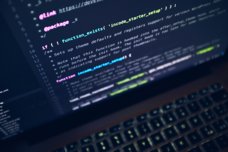Solid waste (SW) management is one of today's major global challenges. With global SW generation exceeding two billion metric tons every year, there are various negative impacts, including health risks and environmental contamination.
The problem is very much in evidence in South Africa, a country that struggles with large volumes of SW and inadequate collection services. In 2017, 30.5 million tons of solid waste were generated, with only 34.5% being recycled and 11% not even reaching adequate final disposal. One of the primary challenges here is reducing the waste disposed of in landfills, which is hindered by littering, illegal dumping, lack of regular collection services, incomplete coverage, and historical spatial and service delivery inequalities.
Whilst not included as a primary UN Sustainable Development Goal (SDG), addressing solid waste management is related to 12 of 17 SDGs, which makes it crucial to achieving city sustainability.
To address these issues, researchers investigated a novel way of improving SW management.
Solid waste monitoring
Monitoring is essential to improving solid waste management. In this area, different methods have been investigated. Some include designs for sensors to monitor solid waste containers and detect their fullness levels. However, many of these designs have only been tested at a prototype level. In the Netherlands, the city of Utrecht has successfully incorporated ultrasonic sensors, and daily rerouting based on container fullness levels. Implementing these technologies in lower-income countries may be challenging.
A dynamic model
The researchers involved in this new study propose a dynamic model incorporating real-time monitoring, optimized collection routes, and citizen participation.
The study focused on the Hatfield and Hillcrest neighbourhoods of the city of Tshwane, Greater Pretoria, in South Africa. The study area comprised 9.45 km2 surrounding the University of Pretoria (UP) main campus, with different land uses such as residential, institutional (embassies), commercial, agricultural, and educational.
Data collection
To collect the necessary data, they designed a survey to identify solid waste containers (capacity and dimension), illegal dumping, and littering. The survey was presented using the open-source Epicollect5 tool, a highly adaptable smartphone application for on-field information gathering. The app can store records on the device to later be updated to the cloud when Wi-Fi is available. This is a particularly important function for South African citizens since constant internet connection might be a challenge. Uploaded data was geolocated and visualized in an online GIS environment. Seen as a whole, this approach can be considered as a first step towards a digital twin for SW management.
The data was collected by bachelor's students in their final year of the Architecture programme at the University of Pretoria. Involving students in this pilot initiative allowed the researchers to assess the feasibility and effectiveness of crowd-sourced data collection in addressing solid waste management challenges.
Results
In a three-day data collection campaign, a total of 1270 containers and 820 littering sites were identified. Containers in public spaces were shown to be inadequately distributed, and litter reports turned out to be most frequent in peripheral park areas.
The Epicollect5 tool proved to be a fast method of crowd-sourced information collection. It enables citizens to engage directly and rapidly. Anyone with access to a mobile device can inform authorities of waste status. Furthermore, by involving citizen participation, this method reduces challenges such as location accuracy, high resource requirements, and disagreement on labelling as identified in AI computer vision detection research.
Conclusions
The researchers conclude that a combination of digital twinning, multi-stakeholder engagement, and citizen participation can provide valuable insights into the distribution of solid waste containers and the occurrence of illegal dumping and littering.
Developing digital counterparts of waste management infrastructure and mapping out their spatial distribution will enable policymakers and stakeholders to understand the current state of solid waste container placement. They can then use this knowledge as an evidence base for decision-making and targeted interventions.
All in all, this hybrid and collective approach could especially benefit lower-income countries with limited resources looking to improve their SW management practices.
Recommendations
The researchers recommend further development of a digital twin for solid waste management. For example, by calculating solid waste production per building. Reports of container fullness levels and littering locations can also be used to optimize a waste collection system using a Capacitated Vehicle Routing Problem (CVRP) model.
Further research could explore the effectiveness of interventions informed by this data, such as targeted container placement or increased cleaning frequency in areas with high littering.
This teaser is based on a journal article entitled Solid Waste in the Virtual World: A Digital Twinning Approach for Waste Collection Planning. The final published version is under embargo until 21 / 08 / 24.






